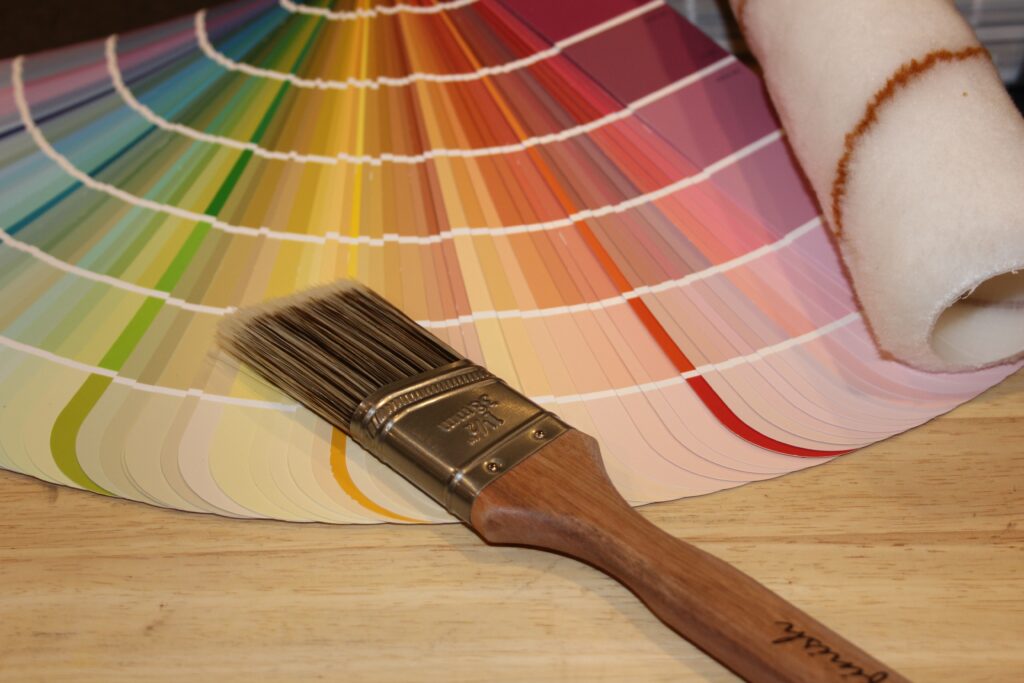
An Overview of Australian Paint Types
This article gives an overview of different types of paints used in Australia, and the applications they are best suited to. Note that all advice is general in nature, and you should consult an expert before making a decision.

Paints in Australia:
Epoxy Paints
Epoxy Paint is the most widely used industrial & marine protective coating paints, developed in the 1950’s. All epoxy paints are ‘two-pack paints’ meaning they are made of two parts – a resin with the colour and base, and a hardener, which when combined will begin to harden and cure onto the metal surface – providing a very hard-wearing coating which adheres tightly to the surface and will not flake off. For this reason, epoxies are commonly used for structural steel, where a long and guaranteed life span is needed.
Most epoxy paints are barrier coatings. This means they protect the steelwork by preventing moisture, oxygen, and soluble salts from reaching the surface of the metal. This prevents the corrosion process from working and inhibits rust. Epoxies have excellent adhesion, chemical resistance, and water resistance. They can be susceptible to chalking and therefore are normally top-coated with a UV-resistant coating when used on outdoor structural steelwork.
Epoxies include epoxy zinc, epoxy primer, epoxy high build & epoxy topcoats.
- Epoxy Zinc – such as Interzinc 52, Barrier or Zincanode 402.
- Epoxy Primer – such as Penguard Special, Intergard 251 Durepon or Epinamel.
- Epoxy High Build – such as Jotamastic 90, Duremax GPE, Durebild, Interplus 1180 or Interseal 670.
- Epoxy Top Coats – such as Interthane 990, Hardtop AX or XP, Weathermax HBR, Luxathane R or Poly-U-400.
Some epoxy paints are ‘direct to metal’ coatings (DTM), which means they do not need to be applied over a primer. This innovation means that certain types of high-build can be applied at up to 500 microns direct to the substrate, rather than a primer, mid-coat and top-coat being required.
Epoxy-Mastics are surface tolerant coatings, meaning the material adheres well to a substrate even when it is not white-metal blasted. These are useful for short-term coatings that is not part of critical infrastructure, for example a cradle or storage rack used in transportation or steel construction equipment that will only be in service for a few years. Examples of this product include Durebild STE, Interseal 670HS, and Jotamastic 90.
Zinc Phosphate Coatings – “Red Oxide”
Commonly known as red oxide coatings or grey oxide coatings, this single pack primer is a low-cost phosphate paint which is often used as a holding primer or for indoor structural steel coatings, e.g., enclosed warehouse structural steel. The most common is Jotaprime 250 Red Oxide or Jotaprime 265 (now renamed Pilot QD) or Intergard 269.
Polyurethane, Polyaspartic, Polysiloxane
Polyurethanes are ‘two-pack paints’ meaning they are made of two parts – a resin with the colour and base, and a hardener, which when combined will cause a chemical reaction between the two parts, causing it to harden and cure into a very hard, glossy, UV resistant surface.
Polyurethanes make excellent top-coats, as they are more resistant to UV rays than powder coating, and have good scratch resistance once fully cured. Recent advances in technology mean that some polyurethane products can be applied direct-to-metal, giving the product good protection, gloss and adhesion with only a single coat of paint.
Examples of polyurethanes include Interthane 990, Hempathane, Poly-U-400 and Luxathane
Inorganic Zinc Coatings
Inorganic Zinc Silicate (often abbreviated to IZS), is a high-solids zinc coating that protects steelwork in two ways – partly as a barrier coating, and partly (when the barrier is breached) though ‘anodizing’ the surface, similar to hot dip galvanised coatings. This is known as a sacrificial coating, providing cathodic protection by allowing the zinc to corrode, rather than the steelwork, preventing the rust from ‘undercutting’ the coating and making it flake off. IZS coatings provide superior galvanic corrosion protection when compared with hot dip galvanising, particularly in corrosive coastal environments, due to the silicate molecules holding the zinc particles to the surface and providing the barrier protection from corrosion.
IZS contains a large amount of zinc metallic dust that is mixed with a binder to ensure it adheres to the substrate. This coating is different from other two-pack paint coatings as the zinc Part A will often be a powder that is added to the liquid Part B, whereas most 2-pack paint coatings are both liquid Part A & B.
Inorganic means the coating is made from non-living things, mostly based on either zinc or silicone. IZS should not be confused with Epoxy Zinc, which are different types of coating. Ferro-Clean has provided Inorganic Zinc coatings in Perth since 1966 and was involved in product trials when some early versions of IZS were developed, as Inorganic Zinc coatings were invented in Australia in 1933.
Vinyl Coatings, Tar Epoxy or Oil Based Paint.
These types of paint are old and should be considered obsolete for use on structural steelwork coatings in Western Australia. Many alternate products are available that will provide equal or better protection than Tar Epoxy, Vinyl Coatings or Oil Based Paints.
Acrylics, Enamels and Water-Based Paint.
While often used for domestic painting such as house painting or DIY projects, these products are not recommended for structural steel, even indoors, due to the potential risk of corrosion.
Disclaimer: This information is only for general informational and educational purposes only and is not intended as professional advice. All information on the site is provided in good faith, however we make no representation or warranty of any kind, express or implied, regarding the accuracy, adequacy, validity, reliability, availability, or completeness of any information on the site. All information should be independently verified with an expert prior to use, as specifications, standards, procedures, and products can change at any time. Visit our privacy policy page to learn more.
